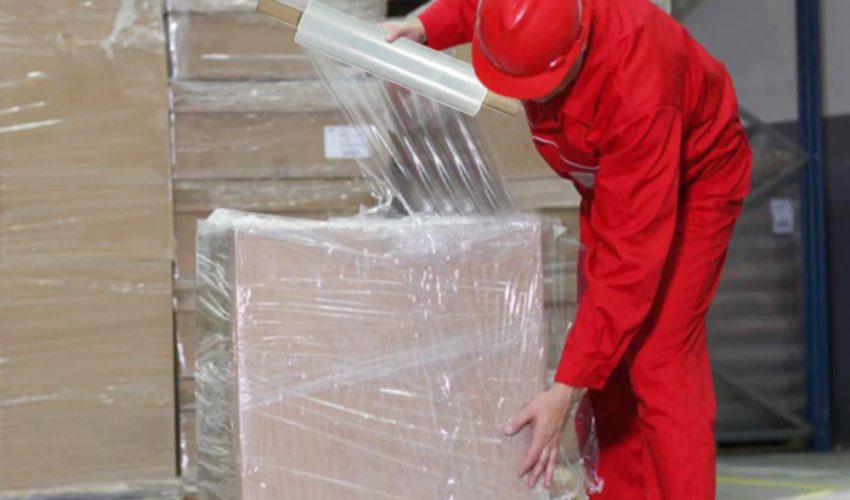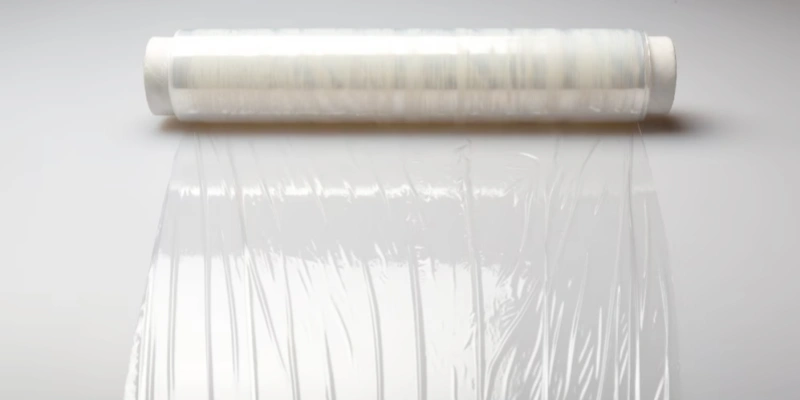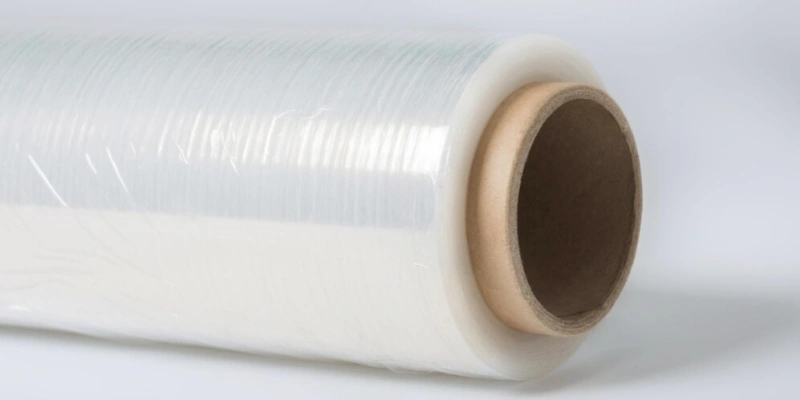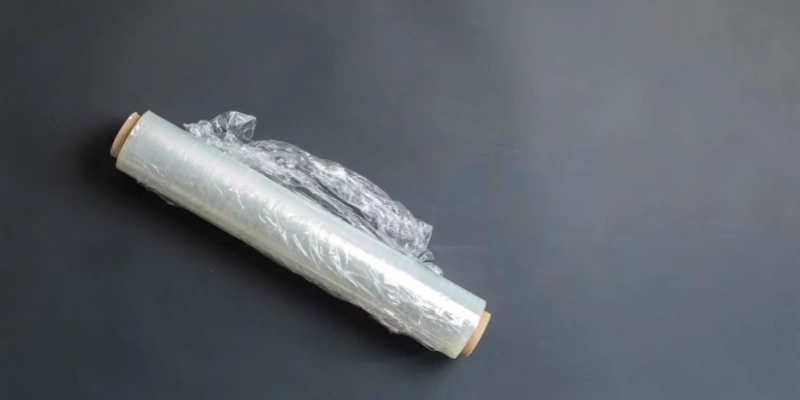
From sealing leftovers in home kitchens to securing pallets in industrial warehouses, plastic wrap rolls have become an indispensable tool across industries. But with countless options—from thin PVC films to heavy-duty polyethylene wraps—how do businesses and consumers choose the right type for their specific needs? Whether you’re a restaurant owner seeking FDA-compliant food-grade wraps or a logistics manager prioritizing cost-efficient bulk purchases, understanding key factors like material durability, cling performance, and eco-friendly alternatives is critical. In this comprehensive guide, we’ll break down the essentials of plastic wrap selection, spotlight top commercial-grade solutions, and reveal where to source them at competitive prices—helping you balance functionality, sustainability, and budget.
Plastic wrap rolls may seem simple, but choosing the right material can drastically impact performance, cost, and environmental footprint—especially for businesses that rely on high-volume usage. Below, we break down the key differences between PVC, PE, and Biodegradable wraps, tailored for commercial and industrial applications.
Material Characteristics:
Pros:
Cons:
Best For:
Material Characteristics:
Pros:
Cons:
Best For:
Material Characteristics:
Pros:
Cons:
Best For:
| Factor | PVC | PE | Biodegradable |
|---|---|---|---|
| Cost per Roll | $ (Lowest) | $$ | $$$ |
| Durability | Moderate | High | Low-Moderate |
| Eco-Impact | Non-recyclable | Partially recyclable | Compostable |
| Best Use Case | Retail food display | Logistics/Heavy-duty | Sustainability-focused packaging |

Plastic wrap is a critical tool for industrial packaging, logistics, and machinery protection—but improper use can lead to material waste and cost overruns. Here are 5 specialized hacks tailored for heavy-duty applications, leveraging PWP Stretch Film’s technical advantages to maximize efficiency:
Problem: Unstable pallet loads risk damage during transit.
Solution:
Data-Driven Savings:
Proper stretching can reduce film usage by 40% while improving load containment.
Problem: Static buildup causes film cling to machinery or itself, slowing workflows.
Solution:
Industrial Use Case:
Automotive parts packaging requires static-free films to prevent microchip damage.
Problem: Overusing thick films increases material costs unnecessarily.
Guidelines:
| Load Type | Recommended Thickness | PWP Product Match |
|---|---|---|
| Lightweight Boxes | 60-80 gauge | PWP Standard Duty Cast Film |
| Metal Parts/Machinery | 90-120 gauge | PWP High-Performance Blown Film |
| Sharp-Edged Industrial | 120+ gauge | PWP Reinforced Core Film |
Pro Tip:
PWP’s blown films offer higher puncture resistance for jagged loads, while cast films excel in clarity and stretchability.
Problem: Manual tearing leads to uneven edges and film waste.
Automation Fix:
Sustainability Metric:
Recycling 1 ton of PWP film reduces CO2 emissions by 1.8 tons vs. virgin plastic production.
Problem: Temperature shifts cause film brittleness or over-softening.
PWP Solutions:

Selecting the optimal plastic wrap is critical for maximizing load security, minimizing waste, and reducing costs in industrial operations. Below, we outline a step-by-step decision framework, leveraging PWP Stretch Film’s specialized product lines to address heavy-duty challenges.
Key Factors:
Technical Tip:
PWP’s blown films offer superior tear resistance for jagged loads, while cast films provide clarity and consistent stretch ratios.
Climate & Storage:
| Condition | PWP Film Recommendation | Technical Benefit |
|---|---|---|
| Subzero Temperatures | PWP Freezer-Grade Film (-40°F to 50°F) | Elasticizers prevent brittleness. |
| Outdoor/UV Exposure | PWP UV-Stabilized Film (up to 160°F) | Resists degradation from sunlight. |
| High-Humidity Warehouses | PWP Anti-Fog Film | Prevents moisture buildup under wrap. |
Case Study:
A logistics company reduced film waste by 30% after switching to UV-stabilized film for outdoor pallet storage.
Machine Compatibility:
Efficiency Metric:
Automated systems using PWP’s 70% pre-stretch films cut material usage by 40% compared to hand-applied wraps.
Eco-Options:
Cost-Saving Insight:
Switching to thinner, high-performance films (e.g., downgauging from 100 to 80 gauge) can reduce plastic use by 20% without compromising load stability.
Cost Drivers:
Example:
A manufacturer saved $12,000 annually by replacing 120-gauge PVC with PWP’s 80-gauge blown film, maintaining durability while using 33% less material.
Contact PWP Stretch Film’s industrial team directly for custom formulations and bulk pricing tailored to your operational needs.

Here’s a tailored guide for preventing commercial-grade cling wrap (used for industrial, logistics, or non-food packaging) from sticking to itself, with adjustments for its thicker material and unique handling requirements:
By addressing static, storage, handling, and equipment adjustments, you can mitigate sticking issues in commercial cling wrap applications while maintaining workflow efficiency.

Heavy duty plastic wrap rolls are designed for tougher, more demanding packaging tasks, offering extra strength and durability. These wraps are ideal for securing large, heavy, or bulky items, as well as pallets of goods that need added protection during transport or storage. The thick, stretchable material provides superior resistance to tears and punctures, making it the go-to choice for industrial and commercial applications. A heavy-duty plastic wrap roll is essential for keeping items intact and safeguarded from external elements such as moisture, dirt, or damage caused by rough handling.
Heavy-duty plastic wrap rolls are used in a variety of settings, where their strong, tear-resistant qualities are essential. Some of the most common applications include:
Heavy-duty plastic wrap rolls offer significant advantages when it comes to protecting valuable items during transport, storage, or long-term handling:
Plastic packaging wrap is used in both industrial and retail environments to secure and protect products during transport or storage. It’s similar to the standard plastic wrap but often comes in larger rolls and thicker gauges for industrial-scale applications.
Plastic wrap for individual products is essential for ensuring items are secure, clean, and intact during transport. It is a popular choice for wrapping both small and large products, providing convenience and effective protection.
Finding a plastic wrap roll nearby can be essential, especially when you need it quickly for moving, packing, or food storage. Local stores, such as hardware shops, office supply stores, and grocery stores, often carry plastic wrap rolls in different sizes and strengths for immediate use. When purchasing, considering the wrapping plastic roll price is important, as costs can vary based on thickness, adhesive quality, and durability. Comparing prices across suppliers ensures you get the best value without compromising on the quality needed for secure packaging.
When searching for plastic wrap rolls near you, there are several avenues you can explore to find the right type and size for your needs:
When purchasing a plastic wrap roll locally, there are some important factors to consider to ensure you get the right product for your specific needs:
Selecting the appropriate plastic wrap roll for your needs is crucial for ensuring efficiency and effectiveness. Choosing the wrong type or size may result in waste, poor protection, or unnecessary expense. Consider the following:
Plastic wrap is a great solution for protecting furniture, particularly chairs, during a move or while in storage. Wrapping furniture with plastic helps shield it from dirt, dust, and damage, ensuring that it remains in good condition until it reaches its destination.
Packing plastic wrap is another essential item that helps ensure your belongings are safe during transport or while in storage. Whether you’re wrapping up personal items or large shipments, knowing where to find reliable sources for packing plastic wrap can save time and money.
At PWP Stretch Film, we specialize in providing affordable, high-quality plastic wrap in bulk tailored for commercial, industrial, and household needs. Here’s why we’re your go-to supplier:
Wrapping plastic is commonly referred to as “plastic wrap,” “cling film,” or “stretch film,” depending on its specific use and properties. The most popular term is plastic wrap, which is widely used for wrapping food, protecting items during moving, and securing goods for storage or shipment. This thin, stretchable plastic film adheres to surfaces and is designed to cling tightly, providing a protective barrier against air, moisture, and contaminants. Plastic wrap is commonly made from polyethylene, a type of plastic known for its durability and flexibility.
Stretch film, a variant of plastic wrap, is primarily used in industrial settings to wrap larger items, such as pallets or machinery. It offers a higher level of stretch and strength, providing a tighter and more secure hold. Cling film, on the other hand, is often used in kitchens for wrapping food items, thanks to its excellent cling properties and ability to create an airtight seal that helps preserve freshness.
Yes, you can wrap a tree in plastic wrap, but it depends on the purpose and the type of tree. Generally, wrapping a tree in plastic wrap can have both positive and negative effects, so it’s essential to consider your objective.
If you’re protecting the tree during transportation or to prevent pests from reaching it, wrapping can be beneficial. For example, if you’re moving a young tree or sapling, plastic wrap can help keep its roots intact and shield it from potential damage. However, it is important not to wrap the plastic too tightly, as this can restrict air flow and moisture, potentially suffocating the tree or causing damage to its bark.
On the other hand, wrapping a tree in plastic for prolonged periods is not usually recommended for outdoor trees. Trees need to breathe and get sufficient airflow, and wrapping them too tightly can create a humid environment that encourages the growth of fungi or mold. Additionally, it can trap excessive moisture, which can lead to rot or disease. For mature trees, it’s typically better to use methods like mulching or other protective materials that allow for more airflow and moisture control.
If you intend to protect a tree from frost or extreme weather, consider using specialized tree wraps designed for that purpose, as these allow for better ventilation and moisture regulation.

My name is James Thompson, and I’m the editor of this website dedicated to Stretch Film, Pallet Wrap, and Stretch Wrap products.
My passion for packaging began when I noticed the challenges companies face in securing their products efficiently for transportation and storage. This inspired me to delve deep into the world of stretch films and pallet wraps, exploring the latest technologies and best practices.
I aim to provide valuable insights, practical tips, and up-to-date industry trends to assist you in making informed decisions. Whether you’re a small business owner or part of a large corporation, my goal is to support you in optimizing your operations and ensuring your products reach their destination safely.
Thank you for visiting, and I look forward to accompanying you on your journey toward better packaging solutions.
Comments are closed